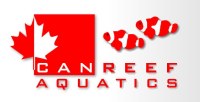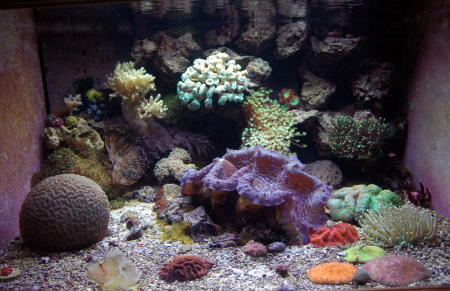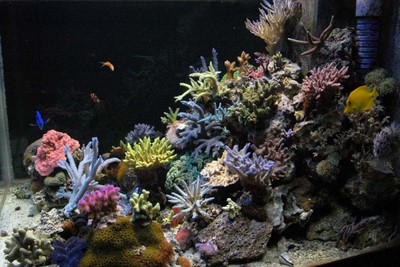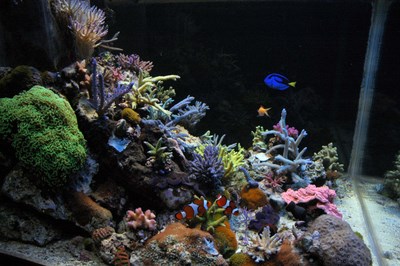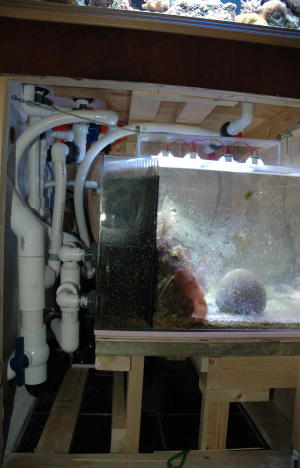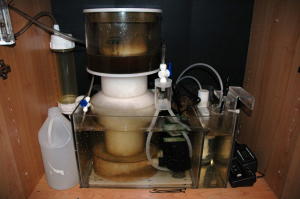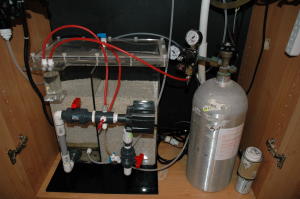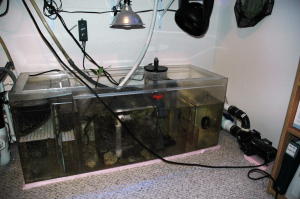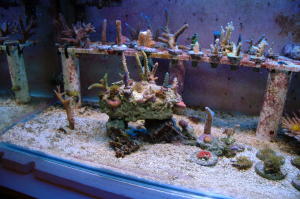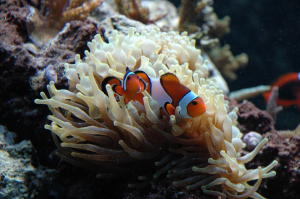| Main Menu |
| Home Bulletin Board Photo Gallery Recommend Us User CP Contact Us |
| Moderators |
| Titus Christy Doug Tony Brad |
|
|
SPHELPS'S 230 GALLON SYSTEM November's Canreef Featured Tank of the Month is SPHELPS's wicked setup. Thanks, Steve, for sharing your system details with us!
Introduction Greetings all, big thanks goes out to CANREEF for honouring my tank as this months TOTM. I also have to thank and give credit to my best girl Heather for sharing in this hobby with me; although I do all the work she has great taste which is good enough for me. I've been hooked on this hobby for quite some time and while my addiction grows stronger with every new addition, it also spreads like a disease to those around me. The featured tank is my third saltwater aquarium, the first being an LPS and soft reef and the second being a fish only. I never started with fresh water but rather let my ambition get the best of me and jumped straight into the salty water.
System The aquarium consists of two display tanks stacked together vertically in a stand and canopy setup. All filtration equipment is stored in a room directly behind the display tanks which has opened a new level of space and access since any of my previous setups which contained everything within the stand. Besides the skimmer and calcium reactor everything was designed and constructed by myself. The top display is an SPS dominant setup while the bottom display is limited to LPS and soft corals. Top Display
Bottom Display
Equipment
Aquarium Chemistry I employ the Zeovit method to keep nutrients at a consistent low and elements a consistent high. I also rely on my controller to keep some of the other levels constant. I've found stability of the water chemistry to be just as or more important than the actual amount of each element. I use Tropic Marine Pro for salt, I've used many different kinds of salt mixes but found this one to be the best so far. The chemistry of the aquarium can be summarized as follows:
Zeovit Supplements added
Lighting and Photoperiod Top Display This tank being a 3 foot cube made for a difficult lighting decision. I'm actually still working on it and planning on adding a few extra sources and features of lighting. The majority of the lighting is provided by a centered 400W halide and the lighting is supplemented with high output T5s. The canopy had 3mm mirrored glass mounted to form a pyramid over the lighting to better reflect light downwards.
Metal halide:
HOT5s:
Future additions will likely include additional T5 bulbs such as KZ Fiji Purples and possible pure red spectrum bulbs.
Photoperiod:
Bottom Display This tank was much simpler to light, it simply consists of 4 high output T5s mounted in an acrylic casing that slides back for access using some cable and pulleys.
HOT5s:
Photoperiod:
Feeding and Maintenance I leave most of the feeding to my RENA auto feeder which contains New Life Spectrum marine pellet food. I like to keep the aquarium as close to self sustaining as possible so all fish that are added to the top display need to either eat from the feeder or feed on the microorganisms within the tank. I do however still feed various frozen foods from time to time. The bottom display requires live food and frozen krill for its inhabitants, but only on a weekly basis. Corals are fed twice monthly, the food consists of frozen cyclop-eeze, mysis, and plankton. In addition, dried foods such as Reef Roids and ELOS svC plankton are also used.
Maintenance consists of:
Tank Inhabitants 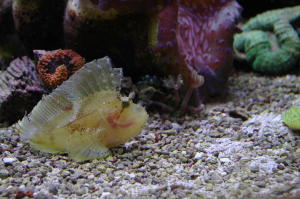
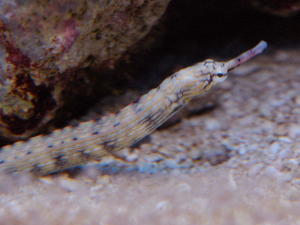
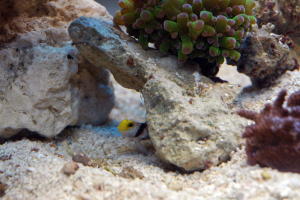
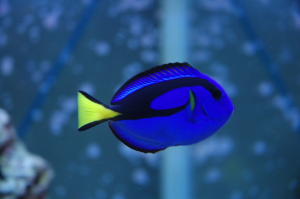
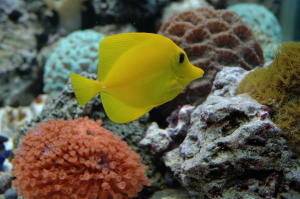
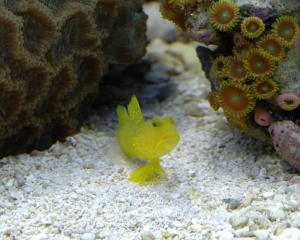
Top Display The inhabitants are limited to those who do not get eaten by a mantis shrimp which hitchhiked its way into the aquarium. I've never actually seen it, but its rapid clicking is heard daily and I've found other evidence of its existence such as broken crab/snail shells and rock fragments. In addition smaller fish and invertebrates such as various types of shrimp disappear shortly after being introduced. Many attempts to trap the bugger have been attempted and all have failed.
Fish and Inverts:
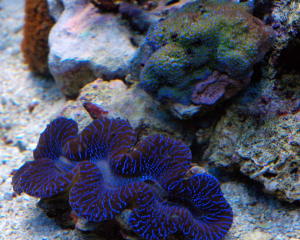
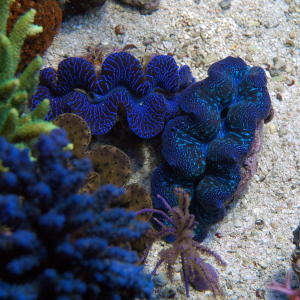
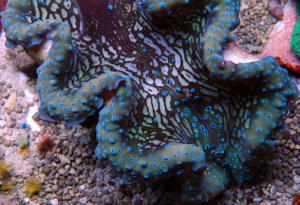
Corals:
Bottom Display
Fish and Inverts:
Corals:
Various types of Protopalythoa, Zoanthus, Ricordea, and Actinodiscus fill most of the empty spaces in both tanks, as well as various other corals and frags not yet identified. Sorry if I left anything out, and thanks again for this opportunity. Hope everyone enjoyed this little blurb about my aquarium. 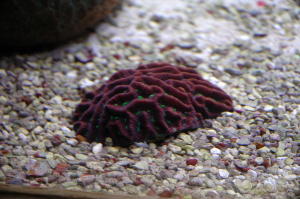
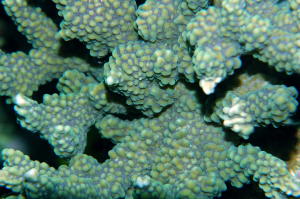
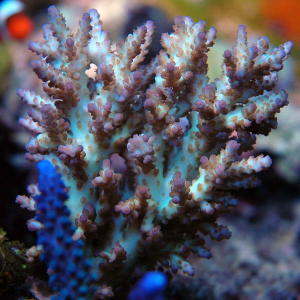
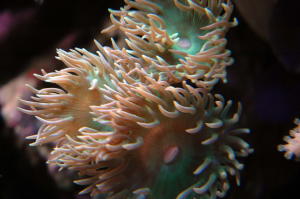
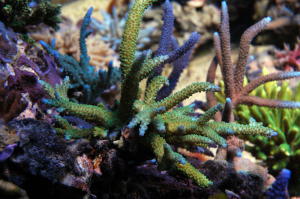
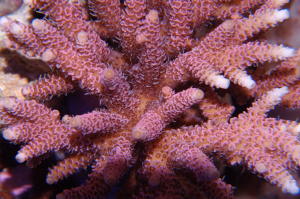
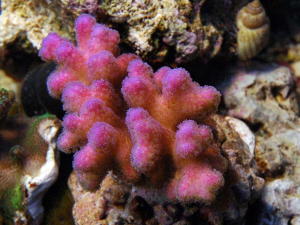
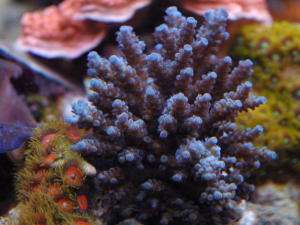
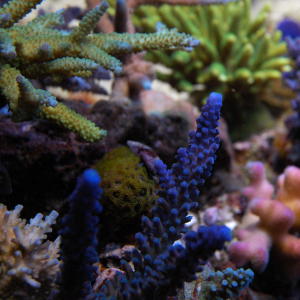
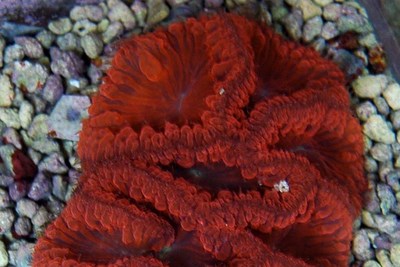
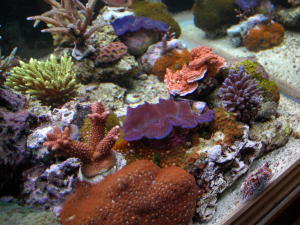
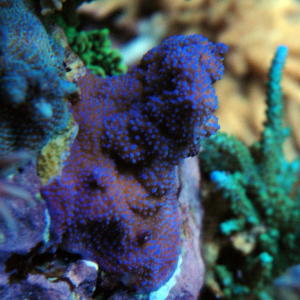
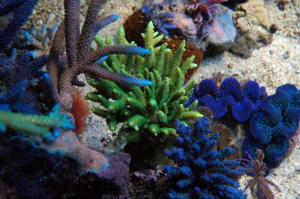

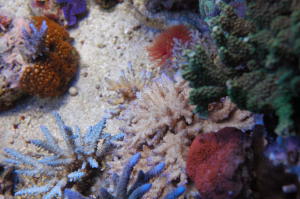
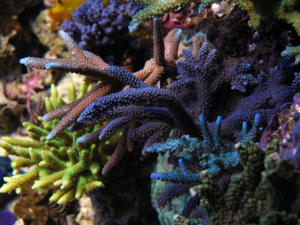
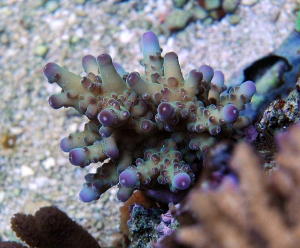
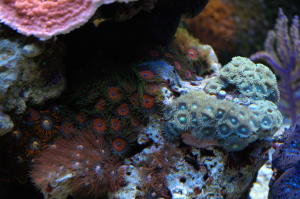
| ||||||||
